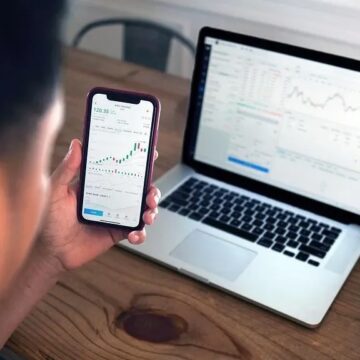As a trader, it’s essential to understand the difference between analyzing your charts and investing in your demat trading account. Trading your charts means that you’re solely focused on technical analysis and chart patterns. Trading your trading account means you’re taking into account your account balance, risk management, and other factors that can affect your overall trading performance.
While technical analysis can be a useful tool for identifying potential trading opportunities, it’s key to remember that trading is not just about analyzing charts. A successful trader must also consider their trading account and the overall risk management strategy they have in place for the stock market.
Trading Your Charts
Trading on your charts is a popular approach among technical traders who rely on chart patterns, trendlines, and other technical indicators to identify potential trades. This approach focuses solely on analyzing the charts and disregards other factors that can affect trading performance. These factors include account size, risk management, and market conditions in the stock market.
While technical analysis can be a valuable tool for traders, it’s critical to remember that no trading strategy is foolproof. The market can be unpredictable, and unexpected events can cause sudden price movements that technical analysis may not have predicted for the stock market.
Demat Trading Your Trading Account
Trading your trading account means that you’re taking into account your account balance, risk management, and other factors that can affect your overall trading performance. This approach focuses on managing your trading account and minimizing losses, while still identifying potential trading opportunities.
Risk management is a crucial component of trading your trading account. Successful traders understand that losses are a part of trading and that proper risk management can help minimize the impact of those losses. This can include setting stop-loss orders, limiting the amount of risk per demat trade, and monitoring account balances.
Trading your trading account also means considering current market conditions and adjusting your trading strategy accordingly. If you’re trading on the stock market, you may want to avoid trading during periods of high volatility or take advantage of market trends in order to maximize profits.
Which approach is Right?
There is no one-size-fits-all approach to trading, and traders must find a strategy that works for them. While trading your charts may work for some traders, others may find more success trading their demat trading account.
It’s imperative to remember that trading is a dynamic and ever-changing market, and traders must be adaptable and willing to adjust their strategy as needed. Trading your trading account can help you stay focused on the bigger picture and manage your risk effectively while trading in the stock market.
Conclusion
In conclusion, trading your charts and demat trading your trading account are two approaches to trading that require different skills and strategies. While technical analysis can be useful for identifying potential trades, it’s also crucial to consider other factors that can affect trading performance, such as risk management and account balance. Ultimately, finding a strategy that works for you and being willing to adapt to changing market conditions is the key to success in the stock market.

















